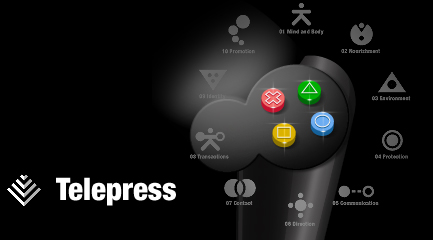The
mammals are the class of vertebrate animals characterized by the
presence of mammary glands, which in females produce milk for the
nourishment of young; the presence of hair or fur; and endothermic
or "warm-blooded" bodies. The brain regulates endothermic
and circulatory systems, including a four-chambered heart. Mammals
encompass some 5,500 species, distributed in about 1,200 genera,
152 families and up to 46 orders, though this varies with the classification
scheme.
The
Classification Problem in an area of science or mathematics is the
problem of separating a large class of objects into smaller classes,
and giving a criterion for determining whether a particular object
is or is not in a particular class.
One of the most famous attempts at classification in biology is
Carolus Linnaeus's famous classification of living things by class,
order, genus, and species. An example in physics is the classification
of the physical world into matter and energy, and the classification
of matter according to its atomic number and energy according to
its wavelength. In mathematics, one successful solution to a classification
problem is the classification of vector spaces by their dimension.
Two vector spaces are isomorphic if and only if they have the same
dimension. Another example is the classification of two dimensional
manifolds: every two dimensional manifold is a connected sum of
spheres, tori, and projective planes. For the intelligent human
species, classification is a big problem as much as a big solution.
The most commonly cited definition of "species" was first
coined by Ernst Mayr. By this definition, called the biological
species concept or isolation species concept, species are "groups
of actually or potentially interbreeding natural populations which
are reproductively isolated from other such groups".
The definition of a species given above as taken from Mayr, is somewhat
idealistic. Since it assumes sexual reproduction, it leaves the
term undefined for a large class of organisms that reproduce asexually.
Biologists frequently do not know whether two morphologically similar
groups of organisms are "potentially" capable of interbreeding.
Further, there is considerable variation in the degree to which
hybridization may succeed under natural and experimental conditions,
or even in the degree to which some organisms use sexual reproduction
between individuals to breed. Consequently, several lines of thought
in the definition of species exist:
Typological species
A group of organisms in which individuals are members of the species
if they sufficiently conform to certain fixed properties. The clusters
of variations or phenotypes within specimens (ie: longer and shorter
tails) would differentiate the species. This method was used as
a "classical" method of determining species, such as with
Linnaeus early in evolutionary theory. However, we now know that
different phenotypes do not always constitute different species
(e.g.: a 4-winged Drosophila born to a 2-winged mother is not a
different species). Species named in this manner are called morphospecies.
Morphological species
A population or group of populations that differs morphologically
from other populations. For example, we can distinguish between
a chicken and a duck because they have different shaped bills and
the duck has webbed feet. Species have been defined in this way
since well before the beginning of recorded history. This species
concept is much criticised because more recent genetic data reveal
that genetically distinct populations may look very similar and,
contrarily, large morphological differences sometimes exist between
very closely-related populations. Nonetheless, most species known
have been described solely from morphology.
Biological / Isolation species
A set of actually or potentially interbreeding populations. This
is generally the most useful formulation for scientists working
with living examples of the higher taxa like mammals, fish, and
birds, but meaningless for organisms that do not reproduce sexually.
It does not distinguish between the theoretical possibility of interbreeding
and the actual likelihood of gene flow between populations and is
thus impractical in instances of allopatric (geographically isolated)
populations. The results of breeding experiments done in artificial
conditions may or may not reflect what would happen if the same
organisms encountered each other in the wild, making it difficult
to gauge whether or not the results of such experiments are meaningful
in reference to natural populations.
Mate-recognition species
A group of organisms that are known to recognise one another as
potential mates. Like the isolation species concept above, it applies
only to organisms that reproduce sexually. Unlike the isolation
species concept, it focuses specifically on pre-mating reproductive
isolation.
Phylogenetic / Evolutionary / Darwinian species
A group of organisms that shares an ancestor; a lineage that maintains
its integrity with respect to other lineages through both time and
space. At some point in the progress of such a group, members may
diverge from one another: when such a divergence becomes sufficiently
clear, the two populations are regarded as separate species.
Microspecies
Species that reproduce without meiosis or mitosis so that each generation
is genetically identical to the previous generation.
Darwin's Theory of Evolution - A Theory In
Crisis
Darwin's Theory of Evolution is a theory in crisis in light of the
tremendous advances we've made in molecular biology, biochemistry
and genetics over the past fifty years. We now know that there are
in fact tens of thousands of irreducibly complex systems on the
cellular level. Specified complexity pervades the microscopic biological
world. Molecular biologist Michael Denton wrote, "Although
the tiniest bacterial cells are incredibly small, weighing less
than 10-12 grams, each is in effect a veritable micro-miniaturized
factory containing thousands of exquisitely designed pieces of intricate
molecular machinery, made up altogether of one hundred thousand
million atoms, far more complicated than any machinery built by
man and absolutely without parallel in the non-living world."
|


